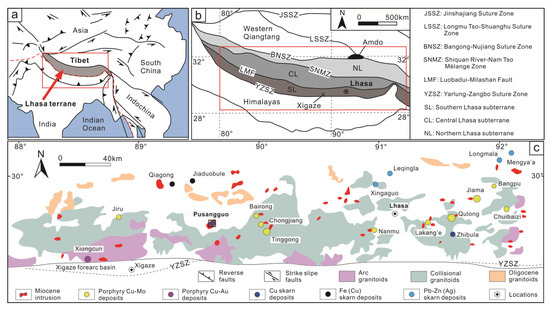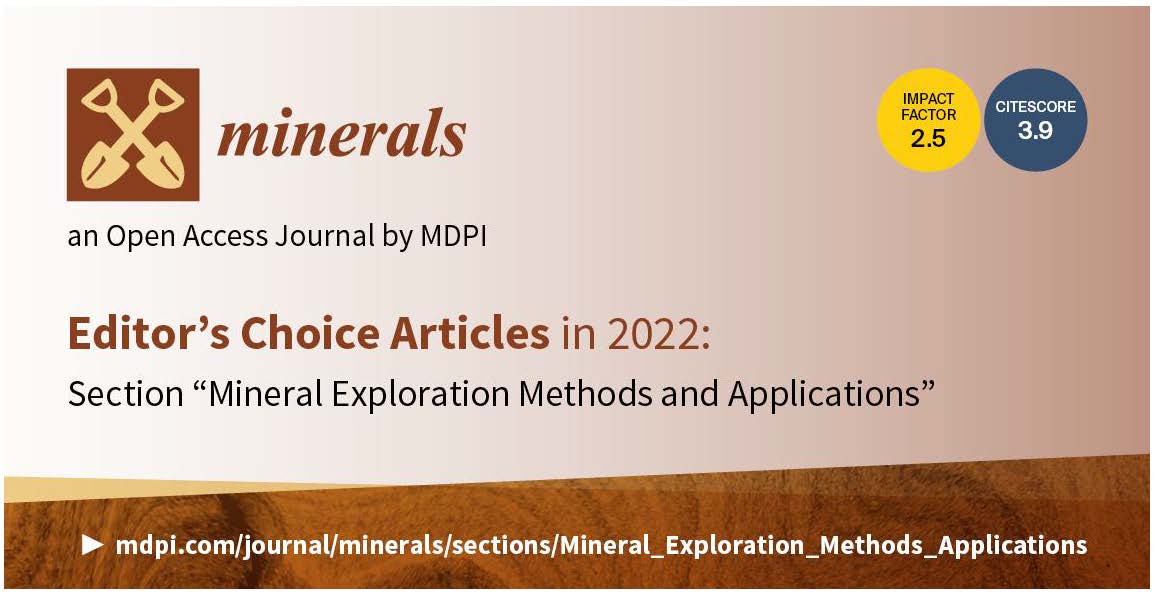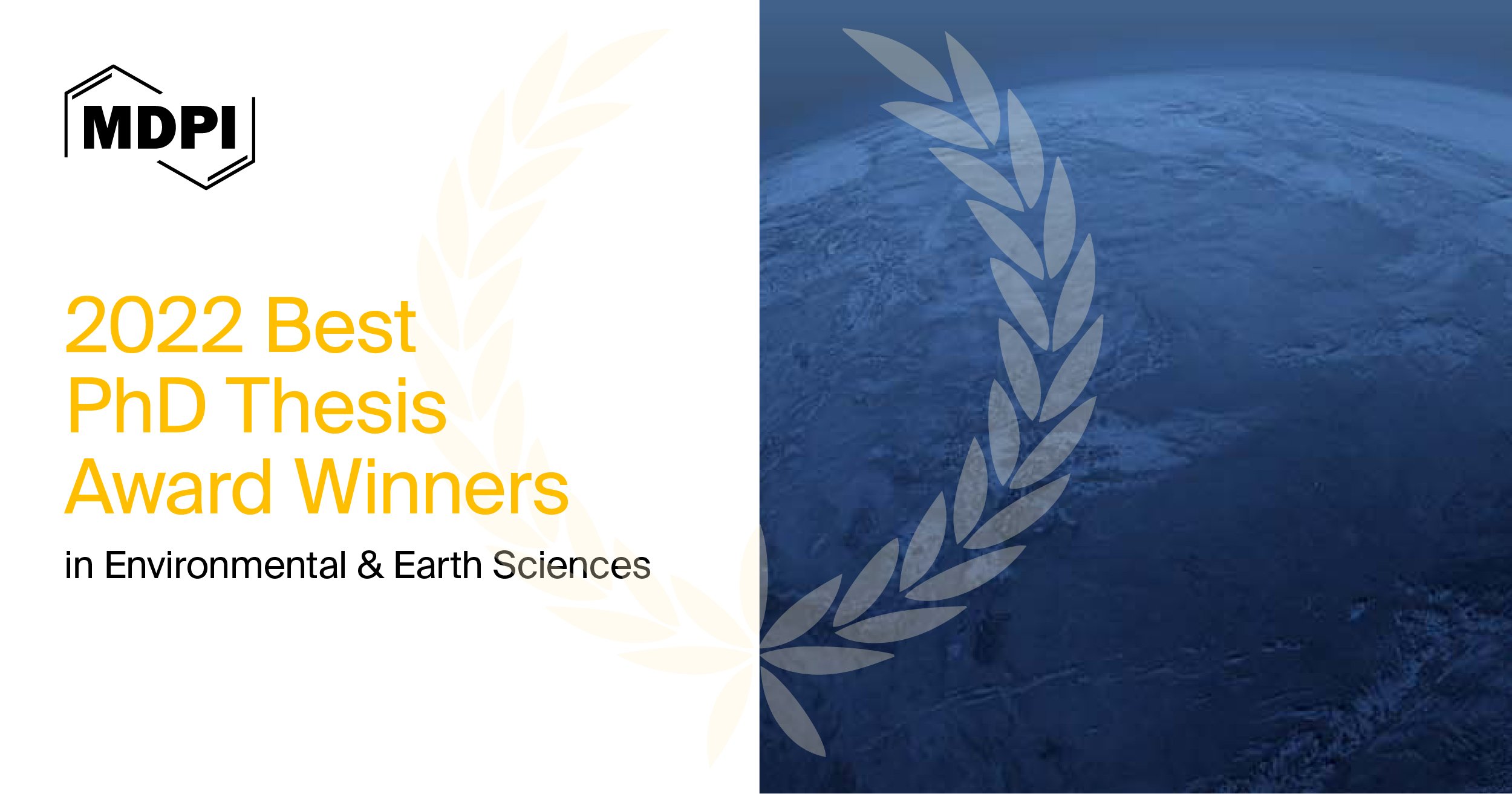-
 Discovery of “Meteoritic” Layered Disulphides ACrS2 (A = Na, Cu, Ag) in Terrestrial Rock
Discovery of “Meteoritic” Layered Disulphides ACrS2 (A = Na, Cu, Ag) in Terrestrial Rock -
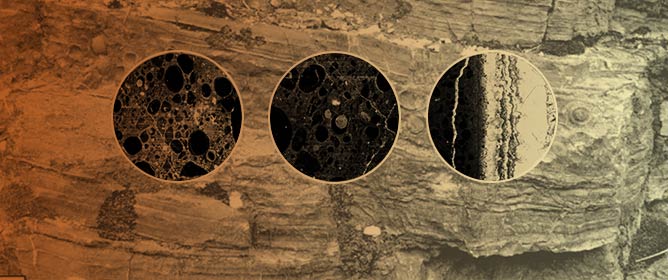 Geochemistry and Geometrical Features of the Upper Cretaceous Vitulano Para-Autochthonous Karst Bauxites (Campania Region, Southern Italy): Constraints on Genesis and Deposition
Geochemistry and Geometrical Features of the Upper Cretaceous Vitulano Para-Autochthonous Karst Bauxites (Campania Region, Southern Italy): Constraints on Genesis and Deposition -
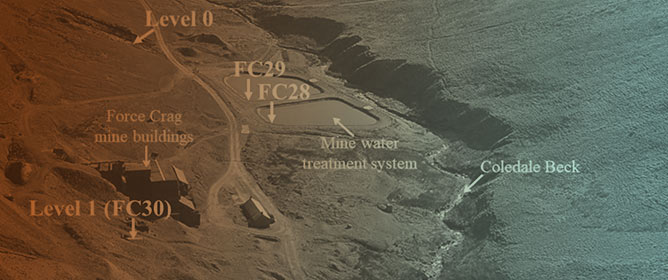 Controls on the Generation and Geochemistry of Neutral Mine Drainage: Evidence from Force Crag Mine, Cumbria, UK
Controls on the Generation and Geochemistry of Neutral Mine Drainage: Evidence from Force Crag Mine, Cumbria, UK -
 Petrogenesis of Eagle Lake Granite and Its Associated Cu–Mo–Au Mineralization, Southwestern New Brunswick, Canada
Petrogenesis of Eagle Lake Granite and Its Associated Cu–Mo–Au Mineralization, Southwestern New Brunswick, Canada -
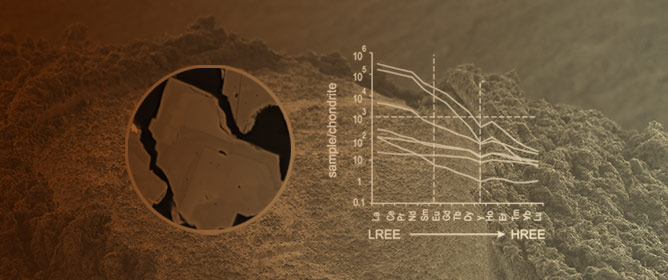 Mineralogy and Distribution of REE in Oxidised Ores of the Mount Weld Laterite Deposit, Western Australia
Mineralogy and Distribution of REE in Oxidised Ores of the Mount Weld Laterite Deposit, Western Australia
Journal Description
Minerals
Minerals
is an international, peer-reviewed, open access journal of natural mineral systems, mineral resources, mining, and mineral processing. Minerals is published monthly online by MDPI.
- Open Access— free for readers, with article processing charges (APC) paid by authors or their institutions.
- High Visibility: indexed within Scopus, SCIE (Web of Science), GeoRef, CaPlus / SciFinder, Inspec, Astrophysics Data System, AGRIS, and other databases.
- Journal Rank: JCR - Q2 (Mining & Mineral Processing) / CiteScore - Q2 (Geology)
- Rapid Publication: manuscripts are peer-reviewed and a first decision is provided to authors approximately 17 days after submission; acceptance to publication is undertaken in 2.5 days (median values for papers published in this journal in the first half of 2023).
- Recognition of Reviewers: reviewers who provide timely, thorough peer-review reports receive vouchers entitling them to a discount on the APC of their next publication in any MDPI journal, in appreciation of the work done.
- Companion journal: Mining
Impact Factor:
2.5 (2022);
5-Year Impact Factor:
2.7 (2022)
Latest Articles
Sphalerite and Pyrite Geochemistry from the Pusangguo Co-Rich Cu–Zn–Pb Skarn Deposit, Tibet: Implications for Element Occurrence and Mineralization
Minerals 2023, 13(9), 1165; https://doi.org/10.3390/min13091165 (registering DOI) - 01 Sep 2023
Abstract
The Pusangguo deposit (1.42 Mt @ 1.42% Cu, 0.14 Mt @ 1.82% Zn, 0.08 Mt @ 1.01% Pb, and 285.8 t Co @ 140 g/t Co) is the first Co-rich Cu-Zn-Pb skarn deposit discovered in the Gangdese metallogenic belt. However, the trace and
[...] Read more.
The Pusangguo deposit (1.42 Mt @ 1.42% Cu, 0.14 Mt @ 1.82% Zn, 0.08 Mt @ 1.01% Pb, and 285.8 t Co @ 140 g/t Co) is the first Co-rich Cu-Zn-Pb skarn deposit discovered in the Gangdese metallogenic belt. However, the trace and minor element geochemistry of the sulfides in this deposit has not been studied, limiting further understanding of elements’ occurrence and mineralization. Here, we identified four ore stages, and two types of sphalerites (SpI and SpII) and pyrites (PyI and PyII), in this deposit. In this study, LA-ICP-MS in-situ trace element analyses were conducted on sphalerite and pyrite, to obtain their chemical compositions, elemental substitution mechanisms, and mineralization physicochemical conditions. The results indicate that two types of sphalerites are generally more enriched with Co than pyrite. SpI has higher concentrations of Co, Cr, Cu, Ag, and As compared to SpII. Both types of sphalerite have very low contents of Sn, Ge, and Ga. PyII has higher contents of most trace elements, such as Co, Ni, Mn, Zn, Cu, As, Sn, Se, Pb, Ag, and Bi, compared to PyI. Both types of pyrite are poor in Mn, Ga, Ge, and Cd, but enriched in As, Co, and Ni. The Mn, Fe, Co, and Cd in sphalerite, and Co, Ni, and Mn in pyrite are generally lattice-bound, while Cu, As, Ag, and Sb are usually present in both micro-inclusions and coupled substitution. Significant elemental correlations in sphalerite indicate the possible substitution mechanisms 2Fe2+ + Ga2+ ↔ 3Zn2+, 2Fe2+ + Ge4+ ↔ 4Zn2+, and (Sb3+, Sn3+) + (Cu+, Ag+) ↔ 2Zn2+. The correlation trends between trace elements in pyrite suggest the coupled substitution mechanisms of (Tl+ + Cu+ + Ag+) + (As3+ + Sb3+) ↔ 2Zn2+ and As3+ + Cu+ ↔ 2Zn2+. The mineralization temperature at Pusangguo, as determined by the GGIMFis sphalerite geothermometer, is 237–345 °C (avg. 307 °C), consistent with the high Zn/Cd ratio (avg. 203), low Ga/In (avg. 0.06), and high In/Ge (avg. 15.9) in sphalerite, and high Co/Ni ratio (avg. 24) in pyrite. These results indicate that the ore-forming fluid was high-temperature, with a low sulfur fugacity (fS2) (10−13.4 to 10−8.3) and low oxygen fugacity (fO2). The high temperature, and low sulfur fugacity and oxygen fugacity of the ore-forming fluid, and the fluid-mixing process, jointly controlled the sulfide precipitation, which caused the formation of the Pusangguo deposit.
Full article
(This article belongs to the Special Issue Sulfide Mineralogy and Geochemistry)
►
Show Figures
Open AccessArticle
Influence of Dosage and Modulus on Soluble Sodium Silicate for Early Strength Development of Alkali-Activated Slag Cements
by
, , , and
Minerals 2023, 13(9), 1164; https://doi.org/10.3390/min13091164 (registering DOI) - 31 Aug 2023
Abstract
In world practice, the need for high-strength concrete with an intensive gain of early strength is due to an increase in requirements for characteristics of concrete and the desire to shorten the construction period. Alkali-activated cement, based on soluble sodium silicates (SSS), can
[...] Read more.
In world practice, the need for high-strength concrete with an intensive gain of early strength is due to an increase in requirements for characteristics of concrete and the desire to shorten the construction period. Alkali-activated cement, based on soluble sodium silicates (SSS), can demonstrate high strength and rapid gain due to the nano-modifying effect of amorphous silica present in SSS. However, the problem with the effective use of such cement compositions is unsatisfactory short setting times. This work investigates the effect of modifying admixtures on the structure formation of alkali-activated slag cement (AASC), its physical and mechanical properties depending on characteristics of SSS and the basicity of the aluminosilicate component (precursor), which was changed by the ratio of the ordinary Portland cement (OPC) clinker and granulated blast furnace slag (GBFS). A positive synergistic effect was noticed from glycerol and trisodium phosphate, as the components of a complex admixture, to control the setting of AASC. This resulted in extending the initial setting time from 1 to 5 min to the values of 21–72 min. The compressive strength of 21–26.3 MPa by 3 h, 36.5–43.4 MPa by 1 day, and 84.7–117.1 MPa by 28 days was obtained. Proper shrinkage deformations were equal to 0.47–0.6 mm/m. It was shown that with an increase in the basicity of the aluminosilicate component, the properties of AASC increased both in the early and late stages of hardening.
Full article
(This article belongs to the Special Issue 65 Years of Alkali Activated Cements and Materials: Achievements and Challenges)
Open AccessReview
Metallogenic Model and Prospecting Progress of the Qiandongshan–Dongtangzi Large Pb-Zn Deposit, Fengtai Orefield, West Qinling Orogeny
by
, , , , , , and
Minerals 2023, 13(9), 1163; https://doi.org/10.3390/min13091163 (registering DOI) - 31 Aug 2023
Abstract
The Qiandongshan–Dongtangzi large Pb-Zn deposit is located in the Fengxian–Taibai (abbr. Fengtai) polymetallic orefield. The ore bodies primarily occur within and around the contact surface between the limestone of the Gudaoling Formation and the phyllite of the Xinghongpu Formation, which are clearly controlled
[...] Read more.
The Qiandongshan–Dongtangzi large Pb-Zn deposit is located in the Fengxian–Taibai (abbr. Fengtai) polymetallic orefield. The ore bodies primarily occur within and around the contact surface between the limestone of the Gudaoling Formation and the phyllite of the Xinghongpu Formation, which are clearly controlled by anticline and specific lithohorizon. Magmatic rocks are well developed in the mining area, consisting mainly of granitoid plutons and mafic–felsic dikes. Previous metallogenic geochronology studies have yielded a narrow range of ages between 226 and 211 Ma, overlapped by the extensive magmatism during the Late Triassic period in this region. The ω(Co)/ω(Ni) ratio of pyrite in lead–zinc ore ranges from 4.44 to 15.57 (avg. 8.56), implying that its genesis is probably related to volcanic and magmatic-hydrothermal fluids. The δD and δ18O values (ranging from −94.2‰ to −82‰, and 18.89‰ to 20.72‰, respectively,) of the ore-bearing quartz indicate that the fluids were perhaps derived from a magmatic source. The δ34S values of ore-related sulfides display a relatively narrow range of 4.29‰ to 9.63‰ and less than 10‰, resembling those of magmatic-hydrothermal origin Pb-Zn deposits. The Pb isotopic composition of the sulfides from the Qiandongshan–Dongtangzi Pb-Zn deposit (with 206Pb/204Pb ratios of 18.06 to 18.14, the 207Pb/204Pb ratios of 15.61 to 15.71, and 208Pb/204Pb ratios of 38.15 to 38.50) is similar to that of the Late Triassic Xiba granite pluton, suggesting that they share the same Pb source. The contents of W, Mo, As, Sb, Hg, Bi, Cd, and other elements associated with magmatic-hydrothermal fluids are high in lead–zinc ores, and the contents of Sn, W, Co, and Ni are also enriched in sphalerite. The contents of trace elements and rare earth elements in the ore are similar to those in the Xiba granite pluton, and they maybe propose a magmatic-hydrothermal origin as well. As a result of this information, the Qiandongshan–Dongtangzi large Pb-Zn deposit may be classified as a magmatic hydrothermal stratabound type, with the Si/Ca contact area being the ore-forming structural plane. Thus, a mineralization model has been proposed based on a comparative analysis of the geological and geochemical properties of the lead–zinc deposit in the Fengtai orefield. It is considered that the secondary anticlines developed on both wings of the Qiandongshan–Dongtangzi composite anticline are the favorable sites for Pb-Zn deposition. Accordingly, the Si/Ca plane and secondary anticline are the major ore-controlling factors and prospecting targets. The verification project was first set up on the north wing of the composite anticline, and thick lead–zinc ore bodies were found in all verification boreholes, accumulating successful experience for deep exploration of lead–zinc deposits in this region.
Full article
(This article belongs to the Special Issue Genesis and Evolution of Pb-Zn-Ag Polymetallic Deposits)
►▼
Show Figures
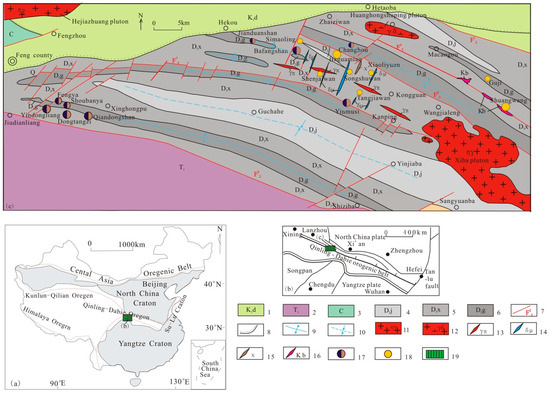
Figure 1
Open AccessArticle
The Effects of Chloride on the High Temperature Pressure Oxidation of Chalcopyrite: Some Insights from Batch Tests—Part 2: Leach Residue Mineralogy
Minerals 2023, 13(9), 1162; https://doi.org/10.3390/min13091162 (registering DOI) - 31 Aug 2023
Abstract
The complete reaction of chalcopyrite at ≥220 °C under pressure oxidation conditions (10 or 20% w/w pulp density, PO2 700 kPa) is a clean process producing a residue consisting of hematite and un-reacted gangue minerals. However, when the process water
[...] Read more.
The complete reaction of chalcopyrite at ≥220 °C under pressure oxidation conditions (10 or 20% w/w pulp density, PO2 700 kPa) is a clean process producing a residue consisting of hematite and un-reacted gangue minerals. However, when the process water contains chloride ions, covellite intermediate formation is significant and subsequently generates elemental sulphur that can persist for up to 60 min. Increasing the temperature to 230 °C reduces this time, although the dissolution of copper and the oxidation of sulphur still follows non-parallel reaction pathways. At 245 °C, the production of elemental sulphur in the presence of moderate chloride levels, 15 g/L, is no longer significant. The effects of other chemical additions (including enhancement of aluminium content) are also examined. Particular emphasis is given to the mineralogy of the leach residues and the deportment of iron in these residues to various phases that include hematite, basic ferric sulphate and natrojarosite. The residues are found to also contain a number of other intermediate phases in addition to covellite and sulphur, such as antlerite and clinoatacamite, depending upon the leach conditions employed.
Full article
(This article belongs to the Section Mineral Processing and Extractive Metallurgy)
►▼
Show Figures
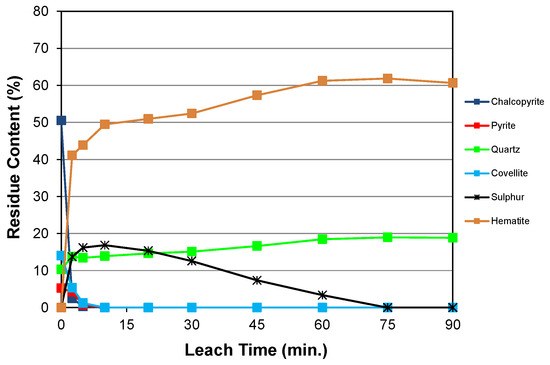
Figure 1
Open AccessArticle
Sedimentary Environment and Organic Accumulation of the Ordovician–Silurian Black Shale in Weiyuan, Sichuan Basin, China
Minerals 2023, 13(9), 1161; https://doi.org/10.3390/min13091161 (registering DOI) - 31 Aug 2023
Abstract
The sedimentary environment and organic matter enrichment relationship of the Upper Ordovician Wufeng Formation black shale, Guanyinqiao mudstone, and Lower Silurian Longmaxi Formation black shale in the Sichuan Basin of Weiyuan are analyzed using geochemical methods such as organic carbon, sulfur, major elements,
[...] Read more.
The sedimentary environment and organic matter enrichment relationship of the Upper Ordovician Wufeng Formation black shale, Guanyinqiao mudstone, and Lower Silurian Longmaxi Formation black shale in the Sichuan Basin of Weiyuan are analyzed using geochemical methods such as organic carbon, sulfur, major elements, and trace elements. The experimental results illustrate that the upper section of the Wufeng Formation and the lower section of the Longmaxi Formation are organic matter enrichment layers. The presence of P indicates a high productivity level in the Sichuan Basin from the Late Ordovician to the Early Silurian. In addition, indicators such as V/Cr, Ni/Co, and S/C suggest that the Wufeng Formation was deposited under anoxic reductive conditions, that the ice age Guanyinqiao segment was in an oxygen-rich to oxygen-poor environment, and that the Longmaxi Formation was in a sulfidic environment. Mo/TOC indicates that the Wufeng Formation shale was controlled by a restricted basin and that the Guanyinqiao segment and the Longmaxi Formation were in a medium-to-weak retention environment. The weak correlation of TOC with P/Al and Al indicates that the level of primary productivity and terrigenous detritus had a minor effect on the organic matter enrichment of the Wufeng and Longmaxi Formation black shale. Conversely, the positive correlation of TOC with V/Cr and Ni/Co illustrates that the anoxic reductive sedimentary environment is the main factor affecting the organic matter enrichment of the Wufeng and Longmaxi Formation black shale. Based on these studies, the development model of organic-rich shales of the Ordovician–Silurian in Weiyuan, Sichuan Basin is proposed. This paper may provide a reference for shale gas exploration in the Wufeng–Longmaxi Formation and a sedimentary response to the major geological events of Ordovician–Silurian.
Full article
(This article belongs to the Topic Hydrocarbon Generation and Accumulation in Unconventional Shale Reservoir: Up-to-Date Advances in Theory, Experiment, Method and Application, Volume II)
►▼
Show Figures

Figure 1
Open AccessArticle
Remote Sensing, Petrological and Geochemical Data for Lithological Mapping in Wadi Kid, Southeast Sinai, Egypt
by
, , , , , , , , , , and
Minerals 2023, 13(9), 1160; https://doi.org/10.3390/min13091160 (registering DOI) - 31 Aug 2023
Abstract
The Wadi Samra–Wadi Kid district in southeastern Sinai, Egypt, has undergone extensive investigation involving remote sensing analysis, field geology studies, petrography, and geochemistry. The main aim of this study is the integration between remote sensing applications, fieldwork, and laboratory studies for accurate lithological
[...] Read more.
The Wadi Samra–Wadi Kid district in southeastern Sinai, Egypt, has undergone extensive investigation involving remote sensing analysis, field geology studies, petrography, and geochemistry. The main aim of this study is the integration between remote sensing applications, fieldwork, and laboratory studies for accurate lithological mapping for future mineral exploration in the study region. The field relationships between these coincident rocks were studied in the study area. Landsat-8 (OLI) data that cover the investigated area were used in this paper. The different rock units in the study area were studied petrographically using a polarizing microscope, in addition to major and trace analysis using ICP-OES tools. The Operational Land Imager (OLI) images were used with several processing methods, such as false color composite (FCC), band ratio (BR), principal component analysis (PCA), and minimum noise fraction (MNF) techniques for detecting the different types of rock units in the Wadi Kid district. This district mainly consists of a volcano-sedimentary sequence as well as diorite, gabbro, granite, and albitite. Geochemically, the metasediments are classified as pelitic graywackes derived from sedimentary origin (i.e., shales). The Al2O3 and CaO contents are medium–high, while the Fe2O3 and TiO2 contents are very low. Alkaline minerals are relatively low–medium in content. All of the metasediment samples are characterized by high MgO contents and low SiO2, Fe2O3, and CaO contents. The granitic rocks appear to have alkaline and subalkaline affinity, while the subalkaline granites are high-K calc-alkaline to shoshonite series. The alkaline rocks are classified as albitite, while the calc-alkaline series samples vary from monzodiorites to granites. The outcomes of this study can be used for prospecting metallic and industrial mineral exploration in the Wadi Kid district.
Full article
(This article belongs to the Special Issue Mineral Prospectivity Mapping (MPM) Using Multi-Source Datasets, Geo-Statistical Algorithms and Machine Learning Techniques)
Open AccessArticle
Transgression Related Holocene Coastal Glendonites from Historic Sites
Minerals 2023, 13(9), 1159; https://doi.org/10.3390/min13091159 - 31 Aug 2023
Abstract
This study examines the occurrence of glendonite along coastlines since 1825, which have been previously referred to under different names such as Pseudogaylussite, Fundylite, and Kool Hoot across eleven sites. By utilising element ratios and 14C radiometric dating techniques, we establish a
[...] Read more.
This study examines the occurrence of glendonite along coastlines since 1825, which have been previously referred to under different names such as Pseudogaylussite, Fundylite, and Kool Hoot across eleven sites. By utilising element ratios and 14C radiometric dating techniques, we establish a more accurate chronology for these varied sites ranging from 10 to 1 thousand years before the present (Ky BP). Sites include tidal flats, coastal barrier islands, and Wadden Sea environments. While some sites still exist, others are only known through publications and museum collections. Our research expands upon previous findings by presenting petrographic evidence that correlates with glendonite formation. Through the examination of the Olenitsa site on the Kola Peninsula, we demonstrate that marine bioclasts enclosed within concretions surrounding glendonites provide temporal context, suggesting that these outcrops were formed during a single event under changing conditions. Notably, certain sediment structures at selected sites indicate the occurrence of cold-water ice-raft storm events and the presence of drop stones. Furthermore, our paper explores the association of historic coastal sites with the formation of ikaite, highlighting the limitations of relying solely on geochemistry and isotopic analysis for interpretation. Intriguingly, we observe that pseudomorphs are abundant in specific areas but absent in adjacent regions with similar environmental, physical, and chemical conditions. No apparent connection is found between volcanic dust cloud-induced cold spells and glendonite. The distribution of coastal glendonites is more likely related to periods of climatic cooling through other means. We show that radiometric dating with 14C provides an indication of age, but the results can be erroneous due to the inclusion of older carbon sources in the analysis. The oldest locations discussed in this study are Kool Hoot (Alaska) and the river Clyde (Scotland), and the youngest glendonites discussed are from the Bay of Fundy in Canada. Occurrences from the Wadden Sea are intermediate in age and sit between the other two groups. The age of the Olenitsa site on the Russian Kola Peninsula is uncertain and still debated. We show that measuring the ratio of Mg/Ca can indicate how much the recrystallised ikaite preserved as calcite is influenced by diagenetic pore waters.
Full article
(This article belongs to the Special Issue Research on Ikaite—Natural Occurrences and Synthetic Mineral Precipitation)
Open AccessArticle
Evaluation of As-Received Green Liquor Dregs and Biomass Ash Residues from a Pulp and Paper Industry as Raw Materials for Geopolymers
Minerals 2023, 13(9), 1158; https://doi.org/10.3390/min13091158 - 31 Aug 2023
Abstract
This study aimed to investigate the impact of as-received biomass fly ashes (BFA) and green liquor dregs obtained from a pulp and paper plant in Brazil as substitutes for metakaolin in geopolymeric formulations. The properties of this type of waste material vary widely
[...] Read more.
This study aimed to investigate the impact of as-received biomass fly ashes (BFA) and green liquor dregs obtained from a pulp and paper plant in Brazil as substitutes for metakaolin in geopolymeric formulations. The properties of this type of waste material vary widely between different industrial plants. This study refrains from subjecting the waste materials to any form of pretreatment, taking into account their organic matter and particle size heterogeneity, requiring extensive characterization to evaluate their influence on the compressive strength, apparent open porosity, and water absorption of the geopolymeric samples. The objective was to assess their potential for upcycling purposes as an alternative to energy-intensive materials, such as ordinary Portland cement (OPC) and advanced ceramics. This potential arises from the ability of alkali-activated materials (AAM) to undergo curing at ambient temperatures, coupled with the possibility of compositions primarily derived from waste materials. To improve the sustainability of the products, the amorphous content of the raw material, which is more reactive than crystalline phases, was quantified and used as the base for mixture ratios. This approach aimed to reduce the requirement for alkaline activators, which have significant environmental impacts, while also increasing the waste content in the formulation. The incorporation of waste materials into the geopolymer matrix generally led to a reduction in the compressive strength compared to the benchmark metakaolin sample (19.4 MPa) but did not present a trend. The dregs led to values of 4.1 MPa at 25 wt% and 7.1 MPa at 50 wt%, a behavior that is somewhat counterintuitive, and BFA at 10 wt% presented 5.7 MPa. Nevertheless, the apparent open porosity remained at high levels for all the samples, close to 50%, and the compressive strength of most of them was over the values obtained for the metakaolin-only samples with mixture ratios calculated from the total composition instead of the amorphous composition. The decrease in strength and the increase in porosity were attributed to the specific characteristics of the waste materials, such as their high crystallinity, presence of organic matter, heterogeneous particle composition, and size. Overall, this study provides insight into the variations in geopolymerization based on the bulk and amorphous content of the aluminosilicate sources and how the characteristics of the waste materials influence the geopolymer matrix. It also highlights how calculating mixture ratios based on the amorphous composition improves the possibility of waste valorization through alkali activation. Additionally, it suggests that BFA and dregs might be effectively utilized in applications other than OPC substitution, such as adsorption, filtration, and catalysis.
Full article
(This article belongs to the Special Issue Development in Geopolymer Materials and Applications)
►▼
Show Figures
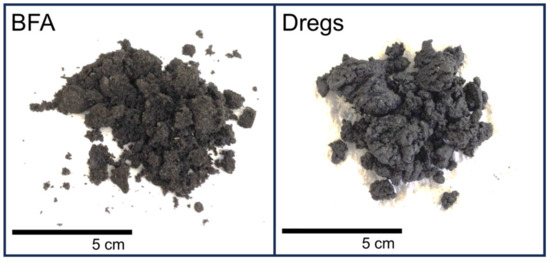
Figure 1
Open AccessArticle
Study on the Galvanic Interaction of Gold and Main Associated Minerals Based on Density Functional Theory
by
, , , , , , , and
Minerals 2023, 13(9), 1157; https://doi.org/10.3390/min13091157 - 31 Aug 2023
Abstract
The galvanic interaction of gold and associated sulfide minerals in thiocyanate systems has a significant impact on gold leaching. The density functional theory was used to further reveal the galvanic interaction between gold and associated minerals. The electron transfer between gold and its
[...] Read more.
The galvanic interaction of gold and associated sulfide minerals in thiocyanate systems has a significant impact on gold leaching. The density functional theory was used to further reveal the galvanic interaction between gold and associated minerals. The electron transfer between gold and its associated minerals at different galvanic interaction distances was simulated. The results show that with the increase of the contact distance between pyrite and gold, the charge of pyrite increases, indicating that it is losing electrons gradually; the charge of arsenopyrite and chalcocite decreases with the rise of the contact distance between gold and pyrite, suggesting that they are gaining electrons. In addition, gold has the greatest influence on the gain and loss of electrons in pyrite and arsenopyrite and has the least influence on chalcocite. Through the calculation of the density of states, it is found that different distances of galvanic interaction have a great influence on the density of states of surface atoms under the action of pyrite and arsenopyrite with gold but have little effect on the density of states of surface atoms under the action of chalcocite with gold.
Full article
(This article belongs to the Special Issue Application of Advanced Quantum Chemistry in Mineral Flotation)
►▼
Show Figures

Figure 1
Open AccessArticle
Study on the Leaching Kinetics of Weathered Crust Elution-Deposited Rare Earth Ores by Hydroxypropyl Methyl Cellulose
by
, , , , , , and
Minerals 2023, 13(9), 1156; https://doi.org/10.3390/min13091156 - 31 Aug 2023
Abstract
In the process of the in situ leaching of weathered crust elution-deposited rare earth ores (WCE-DREOs), there are many problems in the conventional leaching agent, such as a slow leaching rate, low leaching yield and long leaching period. In order to solve the
[...] Read more.
In the process of the in situ leaching of weathered crust elution-deposited rare earth ores (WCE-DREOs), there are many problems in the conventional leaching agent, such as a slow leaching rate, low leaching yield and long leaching period. In order to solve the above problems, 2.0 wt% ammonium sulfate was mixed with hydroxypropyl methyl cellulose (HPMC). The effects of the HPMC concentration, temperature, pH and flow rate on the leaching kinetics of rare earth (RE) and aluminum (Al) were investigated. The results showed that when the concentration of HPMC was 0.05 wt%, the leaching equilibrium time of RE and Al was about 60% shorter than that of single ammonium sulfate. With an increase in the leaching temperature, the leaching equilibrium time of RE and Al decreased, and the apparent activation energy of RE and Al was 23.13 kJ/mol and 17.31 kJ/mol, respectively. The leaching process was in line with the internal diffusion kinetic control model. When the pH of the leaching agent was 4.02~8.01, the leaching yield of RE and Al was basically the same, but the leaching yield of Al was greatly increased at pH 2.0 due to a large amount of adsorbed hydroxy-Al in the RE ore eluded. The leaching yield reached the maximum when the flow rate was 0.7 mL/min. The leaching time and the leaching cost of RE can be saved by the composite leaching agent. The results provide theoretical guidance for the development and industrial application of the new composite leaching agent.
Full article
(This article belongs to the Special Issue Advances in Mineral Processing and Extractive Metallurgy of Base and Precious Metals)
►▼
Show Figures
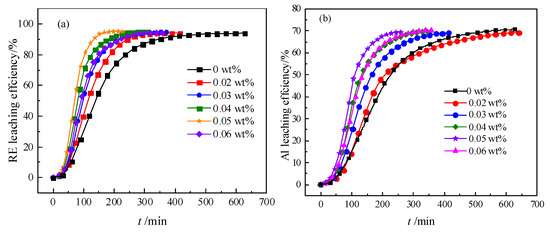
Figure 1
Open AccessArticle
Occurrence Mode of Sodium in Zhundong Coal, China: Relationship to Maceral Groups
Minerals 2023, 13(9), 1155; https://doi.org/10.3390/min13091155 - 31 Aug 2023
Abstract
The occurrence and separation relationships of Na and maceral groups in Zhundong coals were investigated in this study. The sequential extraction results indicate that the total Na content of all samples decreased with increasing sampling depth, and the level in inertinite-enriched samples (inertinite
[...] Read more.
The occurrence and separation relationships of Na and maceral groups in Zhundong coals were investigated in this study. The sequential extraction results indicate that the total Na content of all samples decreased with increasing sampling depth, and the level in inertinite-enriched samples (inertinite content 81.0%–84.0%) was significantly higher than that in corresponding raw coals and vitrinite-enriched samples (vitrinite content 90%). Additionally, H2O-Na (soluble salt species) and insoluble Na (acid-insoluble residues) were found to be concentrated in the inertinite-enriched samples. In combined SEM–EDS and microscope observations, local Na enrichments were detected in all raw coal and inertinite-enriched samples except for the vitrinite-enriched samples, but only inertinite-enriched samples were found to generally have over 10 wt% of Na enrichments, all of which occurred as NaCl. Moreover, Na is mostly filled or associated with cell-filling minerals in cells of fusinite. The maceral separation and Na removal of Zhundong coal were simultaneously achieved using triboelectrostatic separation. The vitrinite content in concentrates increased up to 60%, along with a reduced Na level, while the inertinite and sodium levels were both evidently raised in tailings. The obvious positive occurrence and separation correlation between sodium and inertinite offers new insight into, and a technical reference for, the sodium removal and maceral processing of Zhundong coal.
Full article
(This article belongs to the Special Issue Critical Metal Minerals in Coal)
►▼
Show Figures
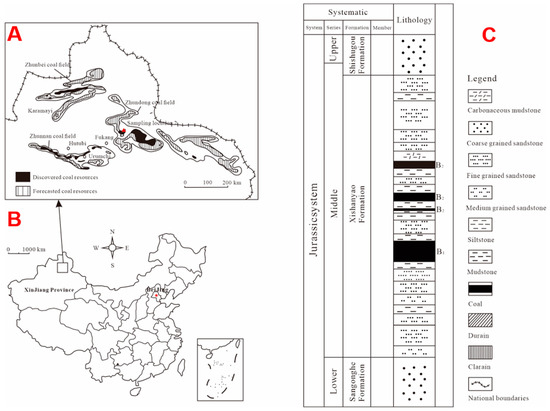
Figure 1
Open AccessReview
Reactivity of Basaltic Minerals for CO2 Sequestration via In Situ Mineralization: A Review
Minerals 2023, 13(9), 1154; https://doi.org/10.3390/min13091154 - 31 Aug 2023
Abstract
The underground storage of CO2 (carbon dioxide) in basalt presents an exceptionally promising solution for the effective and permanent sequestration of CO2. This is primarily attributed to its geochemistry and the remarkable presence of reactive basaltic minerals, which play a
[...] Read more.
The underground storage of CO2 (carbon dioxide) in basalt presents an exceptionally promising solution for the effective and permanent sequestration of CO2. This is primarily attributed to its geochemistry and the remarkable presence of reactive basaltic minerals, which play a pivotal role in facilitating the process. However, a significant knowledge gap persists in the current literature regarding comprehensive investigations on the reactivity of basaltic minerals in the context of CO2 sequestration, particularly with respect to different basalt types. To address this gap, a comprehensive investigation was conducted that considered seven distinct types of basalts identified through the use of a TAS (total alkali–silica) diagram. Through a thorough review of the existing literature, seven key factors affecting the reactivity of basaltic minerals were selected, and their impact on mineral reactivity for each basalt type was examined in detail. Based on this analysis, an M.H. reactivity scale was introduced, which establishes a relationship between the reactivity of dominant and reactive minerals in basalt and their potential for carbonation, ranging from low (1) to high (5). The study will help in choosing the most suitable type of basalt for the most promising CO2 sequestration based on the percentage of reactive minerals. Additionally, this study identified gaps in the literature pertaining to enhancing the reactivity of basalt for maximizing its CO2 sequestration potential. As a result, this study serves as an important benchmark for policymakers and researchers seeking to further explore and improve CO2 sequestration in basaltic formations.
Full article
(This article belongs to the Special Issue Carbon Dioxide Storage, Utilization & Reduction)
►▼
Show Figures
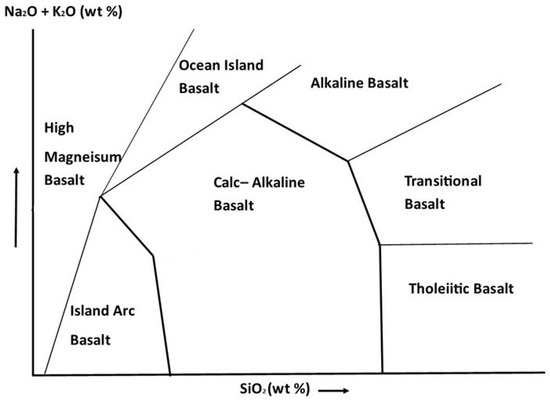
Figure 1
Open AccessReview
Remote Sensing for Lithology Mapping in Vegetation-Covered Regions: Methods, Challenges, and Opportunities
Minerals 2023, 13(9), 1153; https://doi.org/10.3390/min13091153 - 31 Aug 2023
Abstract
Remote sensing (RS) technology has significantly contributed to geological exploration and mineral resource assessment. However, its effective application in vegetated areas encounters various challenges. This paper aims to provide a comprehensive overview of the challenges and opportunities associated with RS-based lithological identification in
[...] Read more.
Remote sensing (RS) technology has significantly contributed to geological exploration and mineral resource assessment. However, its effective application in vegetated areas encounters various challenges. This paper aims to provide a comprehensive overview of the challenges and opportunities associated with RS-based lithological identification in vegetated regions which includes the extensively reviewed prior research concerning the identification of lithology in vegetated regions, encompassing the utilized remote sensing data sources, and classification methodologies. Moreover, it offers a comprehensive overview of the application of remote sensing techniques in the domain of lithological mapping. Notably, hyperspectral RS and Synthetic Aperture Radar (SAR) have emerged as prominent tools in lithological identification. In addition, this paper addresses the limitations inherent in RS technology, including issues related to vegetation cover and terrain effects, which significantly impact the accuracy of lithological mapping. To propel further advancements in the field, the paper proposes promising avenues for future research and development. These include the integration of multi-source data to improve classification accuracy and the exploration of novel RS techniques and algorithms. In summary, this paper presents valuable insights and recommendations for advancing the study of RS-based lithological identification in vegetated areas.
Full article
(This article belongs to the Special Issue Mineral Exploration Based on Remote Sensing)
►▼
Show Figures
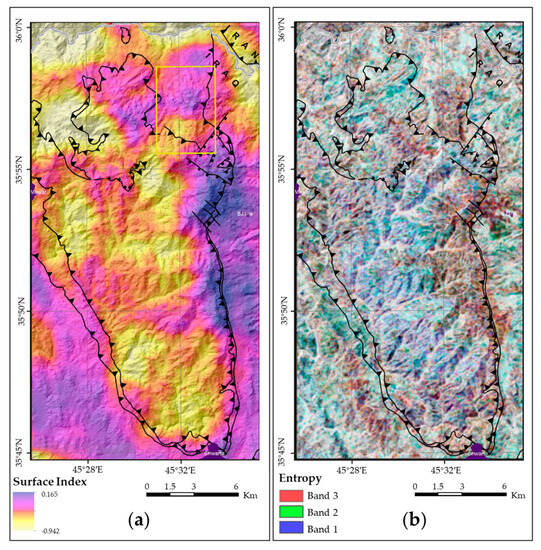
Figure 1
Open AccessArticle
Strongly Peraluminous Highly Fractionated I-Type Granite from Bangong–Nujiang Metallogenic Belt, Tibet: Implications for Continental Evolution and Evaluation of Economic Potentiality
Minerals 2023, 13(9), 1152; https://doi.org/10.3390/min13091152 - 30 Aug 2023
Abstract
The research on highly fractionated granite has significant implications for both the evolution and compositional maturation of the continental crust and metallogenic exploration. As a means of further understanding crustal evolution and promoting ore exploration in the Bangong–Nujiang metallogenic belt (BNMB), we present
[...] Read more.
The research on highly fractionated granite has significant implications for both the evolution and compositional maturation of the continental crust and metallogenic exploration. As a means of further understanding crustal evolution and promoting ore exploration in the Bangong–Nujiang metallogenic belt (BNMB), we present the petrography, zircon LA–ICP–MS U–Pb age, and Hf isotopic data, along with the whole-rock geochemical and Sr–Nd isotopic composition on Kese highly fractionated granite in the Baingoin area within the BNMB, central Tibet. The results show that Kese granite possesses a zircon U–Pb age of 127.8 ± 1.7 Ma and a relative enrichment in zircon Hf isotopic composition (−12.8~+0.3) with a two-stage Hf model age of 1.2~2.0 Ga. This granite belongs to the high-K calc-alkaline series, characterized by a strongly peraluminous feature, and is enriched in large-ion lithophile elements (LILEs) and Nd isotopes (−7.86~−7.74). The granite was likely to have been derived from the mixed melts derived from 40%~45% juvenile basaltic lower crust, 15%~20% ancient lower, and 40% middle–upper, following intense fractional crystallization processes involving amphibole, biotite, plagioclase, and some accessory minerals during the magma’s evolution. We infer that Kese highly fractionated granite can be formed from the continental collision of the Lhasa–Qiangtang terranes initiated before 128 Ma. The reworking of pre-existing juvenile and ancient crustal materials drove the composition of the northern Lhasa terrane to that of a mature continental crust. Moreover, the distinctive geochemical features have shown that the high degree of differentiation led to intense magmatic–hydrothermal interaction during the formation of Kese granite. A comparison of the geochemical characteristics of mineralized and barren granites suggests that the highly fractionated granites in Baingoin from the BNMB have a high economic potential and are suitable for preliminary exploration of Sn–W-(U) deposits.
Full article
(This article belongs to the Special Issue Linking Metamorphism with Orogenesis)
►▼
Show Figures
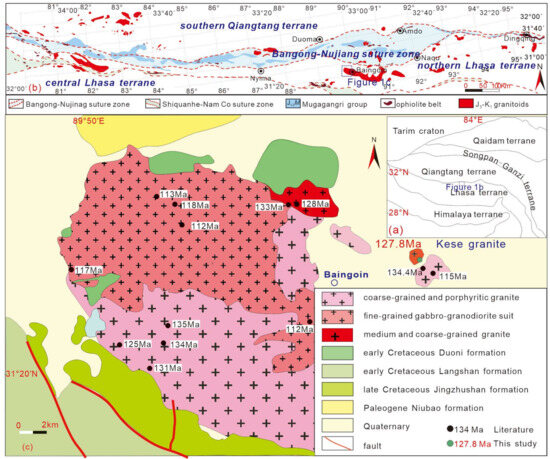
Figure 1
Open AccessFeature PaperArticle
Gas Barrier Properties of Multilayer Polymer–Clay Nanocomposite Films: A Multiscale Simulation Approach
by
, , , , and
Minerals 2023, 13(9), 1151; https://doi.org/10.3390/min13091151 - 30 Aug 2023
Abstract
The paper discusses the development of a multiscale computational model for predicting the permeability of multilayer protective films consisting of multiple polymeric and hybrid layers containing clay minerals as fillers. The presented approach combines three levels of computation: continuous, full atomic, and quantitative
[...] Read more.
The paper discusses the development of a multiscale computational model for predicting the permeability of multilayer protective films consisting of multiple polymeric and hybrid layers containing clay minerals as fillers. The presented approach combines three levels of computation: continuous, full atomic, and quantitative structure–property correlations (QSPR). Oxygen and water are chosen as penetrant molecules. The main predictions are made using the continuum model, which takes into account the real scales of films and nanoparticles. It is shown that reliable predictions of the permeability coefficients can be obtained for oxygen molecules, which is not always possible for water. The latter requires the refinement of existing QSPR methods and interatomic interaction potentials for the atomistic level of calculations. Nevertheless, we show that the maximum effect on permeability reduction from the addition of clay fillers to the hybrid layer can be achieved by using nanoparticles with large aspect ratios and a high degree of orientational order. In addition, the use of the hybrid layer should be combined with the use of polymer layers with minimal oxygen and water permeability. The constructed model can be used to improve the properties of protective coatings for food and drug storage and to regulate the gas permeability of polymeric materials.
Full article
(This article belongs to the Special Issue Composites Based on Layered Silicate Minerals: Preparation, Characterization and Applications)
►▼
Show Figures
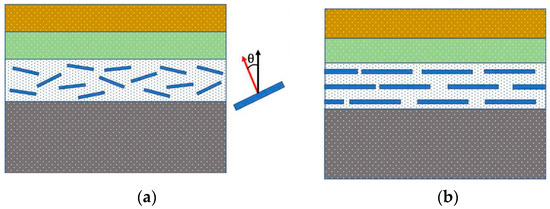
Figure 1
Open AccessArticle
The Role of Te, As, Bi, and Sb in the Noble Metals (Pt, Pd, Au, Ag) and Microphases during Crystallization of a Cu-Fe-S Melt
by
, , , and
Minerals 2023, 13(9), 1150; https://doi.org/10.3390/min13091150 - 30 Aug 2023
Abstract
Quasi-equilibrium directional crystallization was performed on a melt composition (at. %): 18.50 Cu, 32.50 Fe, 48.73 S, 0.03 Pt, Pd, Ag, Au, Te, As, Bi, Sb, and Sn, which closely resembles the Cu-rich massive ores found in the platinum-copper-nickel deposits of Norilsk. Base
[...] Read more.
Quasi-equilibrium directional crystallization was performed on a melt composition (at. %): 18.50 Cu, 32.50 Fe, 48.73 S, 0.03 Pt, Pd, Ag, Au, Te, As, Bi, Sb, and Sn, which closely resembles the Cu-rich massive ores found in the platinum-copper-nickel deposits of Norilsk. Base metal sulfides (BMS) such as pyrrhotite solid solution (Fe,Cu)S1±δ (Poss), non-stoichiometric cubanite Cu1.1Fe1.9S3 (Cbn*), and intermediate solid solution Cu1.0Fe1.2S2.0 (Iss) are progressively precipitated from the melt during the crystallization process. The content of noble metals and semimetals in the structure of BMS is below the detection limit of SEM-EDS analysis. Only tin exhibits significant solubility in Cbn* and Iss, meanwhile Pt, Pd, Au, Ag, As, Bi, Sb, and Te are present as discrete composite inclusions, comprising up to 11 individual phases, within their matrices. These microphases correspond to native Au, native Bi, hessite Ag2Te, sperrylite Pt(As,S)2, hedleyite Bi2Te, michenerite PdTeBi, froodite PdBi2, a solid solution of sudburite-sobolevskite-kotulskite Pd(Sb, Bi)xTe1−x, geversite PtSb2, and a multicomponent solid solution based on geversite Me(TABS)2, where Me = Σ(Pt, Pd, Fe, Cu) and TABS = Σ(Te, As, Bi, Sb, Sn). Most of the inclusions occur as thin layers between BMS grain boundaries or appear drop-shaped and subhedral to isometric grains within the sulfide matrix. Only a small fraction of the trace elements form mineral inclusions of sizes ≤ 0.5 μm in Poss, most likely including PtAs2 and (Pt,Pd)S. It is likely that the simultaneous presence of noble metals (Pt, Pd, Au, Ag) and semimetals (As, Te, Bi, Sb) in the sulfide melt leads to the appearance of liquid droplets in the parent sulfide melt after pyrrhotite crystallization. The solidification of droplets during the early stages of Cbn* crystallization may occur simultaneously with the cooling of later fractions of the sulfide melt, resulting in the formation of Iss. In addition, abundant gas voids containing micro-inclusions were observed in Cbn* and Iss. These inclusions showed similar chemical and mineral compositions to those in BMS matrices, i.e., the presence of gas bubbles did not affect the main features of noble metal fractionation and evolution. Therefore, it is reasonable to assume that ore particles suspended in the melt are either trapped by defects at the crystallization front or transported towards gas bubbles via the Marangoni effect.
Full article
(This article belongs to the Special Issue Precious Metals vs. Base Metals: Nature and Experiment)
►▼
Show Figures
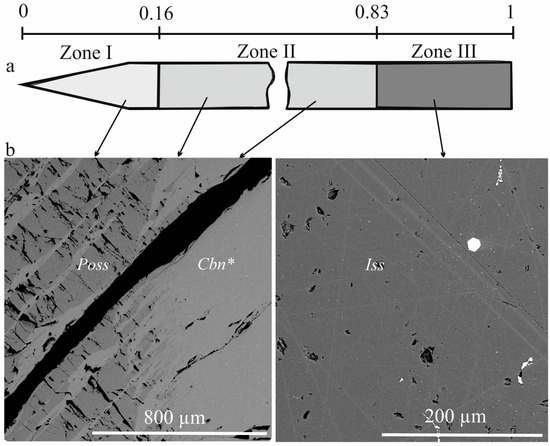
Figure 1
Open AccessArticle
Native Gold and Unique Gold–Brannerite Nuggets from the Placer of the Kamenny Stream, Ozerninsky Ore Cluster (Western Transbakalia, Russia) and Possible Sources
by
, , , , , , , , and
Minerals 2023, 13(9), 1149; https://doi.org/10.3390/min13091149 - 30 Aug 2023
Abstract
We carried out a comprehensive study of native gold (morphology, composition, intergrowths, and microinclusions) from alluvial deposits of the Kamenny stream (Ozerninsky ore cluster, Western Transbaikalia, Russia). The study showed that there were four types of native gold, which differed significantly in their
[...] Read more.
We carried out a comprehensive study of native gold (morphology, composition, intergrowths, and microinclusions) from alluvial deposits of the Kamenny stream (Ozerninsky ore cluster, Western Transbaikalia, Russia). The study showed that there were four types of native gold, which differed significantly in their characteristics and probably had different primary sources from which placers were formed: gold–quartz, oxidized gold–sulfide, gold–silver, and zones of listvenites with copper–gold and gold–brannerite (Elkon-type). Particular attention was paid to the study of unique, both in size and in composition, gold–brannerite nuggets of the Kamenny stream. It was established that the gold in the gold–brannerite nuggets (GBNs) had wide variations in chemical composition and mineral features. According to them, there were five different fineness types of native gold: 750–800‰; 850–880‰; 880–920‰; 930–960‰; and 980–1000‰. The data obtained indicated a multistage, possibly polygenic, and probably polychronous formation of GBN gold–uranium mineralization. The first stage was the formation of early quartz–nasturanium–gold–W–rutile–magnetite association (Middle–Late Paleozoic age). The second was the crystallization of brannerite and the replacement of an earlier pitchblende with brannerite (Late Triassic (T3)–Early Jurassic (J1) age). The third was the formation of the hematite–barite–rutile–gold association as a result of deformation–hydrothermal processes, which was associated with the appearance of zones of alteration in brannerite in contact with native gold with 8–15 wt.% Ag. The fourth was hypergene or the low-temperature hydrothermal alteration of minerals of early stages with the development of iron hydroxides (goethite) with impurities of manganese, tellurium, arsenic, phosphorus, and other elements. The carbon isotopic composition of an organic substance indicates the involvement of a biogenic carbon source. In the OOC area, there were signs that the composition of the GBNs and the quartz–chlorite–K–feldspar-containing rocks corresponded to Elkon-type deposits.
Full article
(This article belongs to the Special Issue Native Gold as a Specific Indicator Mineral for Gold Deposits)
►▼
Show Figures
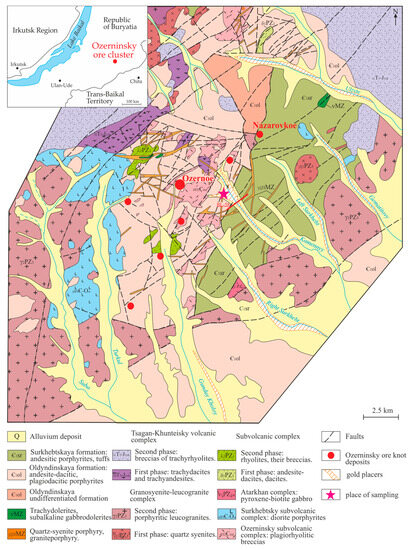
Figure 1
Open AccessArticle
Mild Conditions Method to Remediate Hazardous Jarosite and Its Application as Adsorbent of Arsenic(V) and Water
Minerals 2023, 13(9), 1148; https://doi.org/10.3390/min13091148 - 30 Aug 2023
Abstract
The environmental risks of industrial jarosite (JAR) were mainly attributed to its average particle size (8.6 µm) and its content of leachable heavy metals such as cadmium (Cd, 64.2 mg L−1), lead (Pb, 4.16 mg L−1), and arsenic (As,
[...] Read more.
The environmental risks of industrial jarosite (JAR) were mainly attributed to its average particle size (8.6 µm) and its content of leachable heavy metals such as cadmium (Cd, 64.2 mg L−1), lead (Pb, 4.16 mg L−1), and arsenic (As, 0.27 mg L−1). In this study, various methods were reported to eliminate the leachable elements contained in JAR without collapsing the crystalline structure: acid leaching, ionic exchange, and extended remediation. The effect of pH (2–10), temperature (20–175 °C), and time (<30 min) on the leaching of Cd, Pb, and As were studied. The ultrasound-assisted leaching process (at <60 °C and for 12 min) using a 0.19 M H2SO4 solution allowed to obtain a reduction of leachable Cd (99.2 wt. %), Pb (94.2 wt. %), and As (98.1 wt. %). Although the H2SO4 remediated jarosite, for example, still had a content of Pb, Cd, As, and Mn of 9.25, 0.91, 3.89, and 2.41 g kg−1, respectively, these metallic compounds were insoluble in the pH interval of 2 to 10. The jarosite obtained using acid leaching, JAR2L, had the highest adsorption capacity of As(V) (Qmax = 7.55 g kg−1), while the jarosite obtained using extended remediation had the highest water adsorption capacity (165 mL kg−1). The JAR can be remediated using acid ultrasound-assisted leaching and it can be applied in formulating strategic materials for the chemical industry.
Full article
(This article belongs to the Section Mineral Processing and Extractive Metallurgy)
►▼
Show Figures
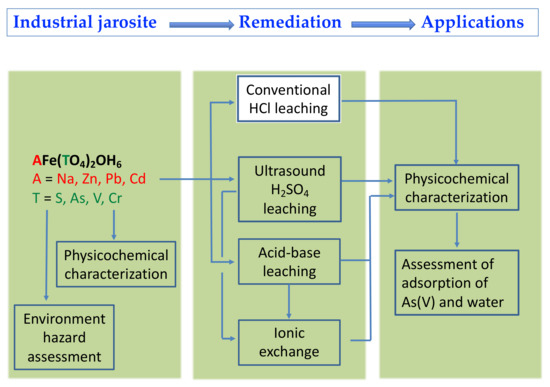
Figure 1
Open AccessArticle
Awaruite, a New Large Nickel Resource: Flotation under Weakly Acidic Conditions
Minerals 2023, 13(9), 1147; https://doi.org/10.3390/min13091147 - 30 Aug 2023
Abstract
To support the transformation to clean low carbon technologies, there is a demand for critical metals such as nickel. Awaruite is a less common nickel-bearing mineral with unique properties and responses to mineral separation. This paper presents the findings of a flotation study
[...] Read more.
To support the transformation to clean low carbon technologies, there is a demand for critical metals such as nickel. Awaruite is a less common nickel-bearing mineral with unique properties and responses to mineral separation. This paper presents the findings of a flotation study to recover awaruite from the Baptiste ultramafic deposit, located in central British Columbia, Canada. Nickel recoveries of up to 65% at the rougher stage were obtained with xanthate as a collector at a pH level of 4.5. Awaruite flotation was shown to be highly dependent on the slurry pH. At weakly acidic conditions, the awaruite surface is activated through the dissolution of the passivation layer formed during grinding in alkaline conditions. Desliming was shown to reduce the acid consumption required to maintain the pH, probably by removing the highly reactive serpentine slimes generated during grinding. Rougher, followed by cleaner stages of flotation, showed that a high-grade concentrate can be produced with up to 45% nickel, 1.3% cobalt, 0.7% copper and negligible concentrations of penalty elements, such as arsenic, lead, and selenium, among others. A nickel flotation concentrate from an awaruite deposit is a promising feedstock for not only stainless-steel production but also for clean energy technologies.
Full article
(This article belongs to the Special Issue Recent Advances in Flotation Process)
►▼
Show Figures
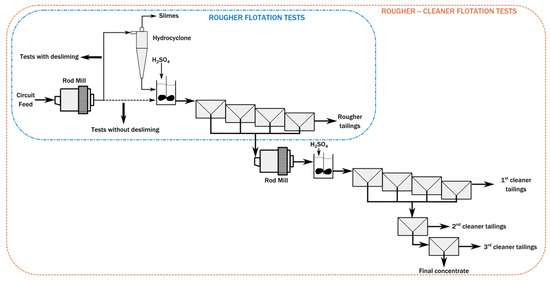
Figure 1
Open AccessArticle
Characterizing Archaeological Rhyolites in the Nenana Valley, Interior Alaska
Minerals 2023, 13(9), 1146; https://doi.org/10.3390/min13091146 - 30 Aug 2023
Abstract
Portable X-ray fluorescence (pXRF) is a useful geochemical technique employed to explore toolstone procurement strategies in the lithic record, commonly utilized in sourcing obsidians. Non-obsidian volcanic toolstones (e.g., dacites, rhyolites, basalts, and andesites) are abundant in interior Alaskan assemblages yet understudied compared to
[...] Read more.
Portable X-ray fluorescence (pXRF) is a useful geochemical technique employed to explore toolstone procurement strategies in the lithic record, commonly utilized in sourcing obsidians. Non-obsidian volcanic toolstones (e.g., dacites, rhyolites, basalts, and andesites) are abundant in interior Alaskan assemblages yet understudied compared to obsidian. Geochemical analyses of these non-obsidian materials offer the potential to gain new insights into ancient toolstone provisioning behaviors. This paper presents a synthesis of geochemical (pXRF) analyses of rhyolite artifacts, systematic regional raw material surveys, and lithic technological analyses collected from nineteen late Pleistocene and Holocene assemblages from the Nenana valley, interior Alaska. Previous research studies on archaeological rhyolites from the region are replicated, new rhyolite artifact groups are identified, and one new rhyolite source is reported and described here. Ultimately, this paper contributes to a growing body of geochemical research seeking to provide a more nuanced look at the complex late Pleistocene and Holocene record of eastern Beringia.
Full article
(This article belongs to the Special Issue Archaeological Mineralogy)
►▼
Show Figures
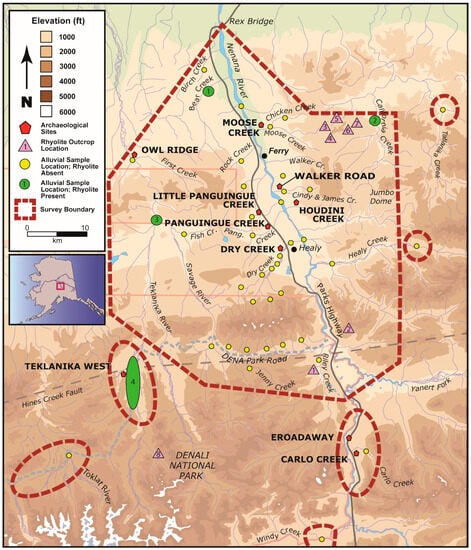
Figure 1

Journal Menu
► ▼ Journal Menu-
- Minerals Home
- Aims & Scope
- Editorial Board
- Reviewer Board
- Topical Advisory Panel
- Instructions for Authors
- Special Issues
- Topics
- Sections & Collections
- Article Processing Charge
- Indexing & Archiving
- Editor’s Choice Articles
- Most Cited & Viewed
- Journal Statistics
- Journal History
- Journal Awards
- Conferences
- Editorial Office
Journal Browser
► ▼ Journal BrowserHighly Accessed Articles
Latest Books
E-Mail Alert
News
Topics
Topic in
Energies, Geosciences, JMSE, Minerals, Water
Basin Analysis and Modelling
Topic Editors: Jingshou Liu, Wenlong Ding, Ruyue Wang, Lei Gong, Ke Xu, Ang LiDeadline: 20 September 2023
Topic in
Remote Sensing, Energies, Minerals, Geosciences, Geotechnics
Support Theory and Technology of Geotechnical Engineering
Topic Editors: Qi Wang, Bei Jiang, Xuezhen Wu, Hongke GaoDeadline: 30 September 2023
Topic in
Energies, Materials, Minerals, Processes, Sustainability
Advanced Materials and Technologies in Deep Rock Engineering
Topic Editors: Jiangyu Wu, Hong Wong, Lang Liu, Wen Zhong, Dan MaDeadline: 26 October 2023
Topic in
Diversity, Geosciences, Life, Quaternary, Animals, Fishes, Minerals, Heritage
Unanswered Questions in Palaeontology
Topic Editors: Eric Buffetaut, Julien ClaudeDeadline: 15 November 2023

Conferences
Special Issues
Special Issue in
Minerals
Microstructures in Quartz: Indicators for Kinematics and the Conditions for Ductile Deformation in Tectonites
Guest Editor: Toru TakeshitaDeadline: 6 September 2023
Special Issue in
Minerals
Innovative Solutions for Measurements, Modelling and Control in Mineral Processing
Guest Editors: Szymon Ogonowski, Dariusz FoszczDeadline: 17 September 2023
Special Issue in
Minerals
Mineralogy and Geochemistry of Suspended Particulate Matters in Rivers
Guest Editors: Viatcheslav V. Gordeev, Alla V. SavenkoDeadline: 30 September 2023
Special Issue in
Minerals
Tectono-Magmatic Evolution and Metallogeny of Tethyan Orogenic Belts
Guest Editors: Fuhao Xiong, Lin HouDeadline: 20 October 2023
Topical Collections
Topical Collection in
Minerals
Critical Metals and Minerals in Coal and Coal Combustion Products
Collection Editors: Shifeng Dai, David French
Topical Collection in
Minerals
New Minerals
Collection Editors: Irina O. Galuskina, Igor V. Pekov, Zhenyu Chen
Topical Collection in
Minerals
Clays and Other Industrial Mineral Materials
Collection Editors: Manuel Pozo Rodríguez, Francisco Franco, Michael Stamatakis
Topical Collection in
Minerals
Bioleaching
Collection Editors: Anna Kaksonen, Sabrina Hedrich, Elaine Govender-Opitz, Mario Vera



